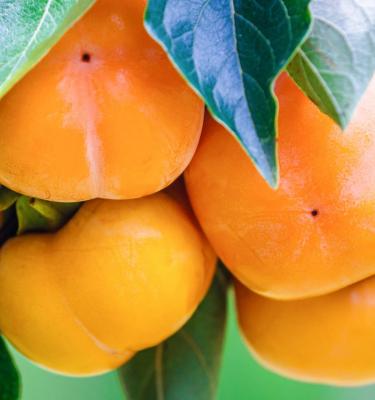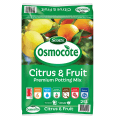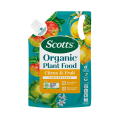

How to grow & care for persimmon
Persimmons are medium to tall growing deciduous trees that produce apple sized, orange coloured persimmon fruits in autumn and early winter depending on the variety.
There are 2 types of persimmons - the non-astringent varieties that can be eaten when they’ve completely changed colour, but still have a crunchy apple-like texture to their flesh and the astringent varieties which must be allowed to go completely soft (their flesh should be jam-like) before eating.
Top 4 steps to growing persimmons
- Choose a full sun position, sheltered from strong winds
- Persimmons are frost tolerant and will grow in most climates from cool-temperate to sub-tropics
- Because of their colour changing foliage and bright orange fruits persimmons make a beautiful feature tree
- Harvest persimmons from April to June depending on your location and the variety you’ve chosen.
Shopping List
- A persimmon tree
- Scotts Osmocote® Compost Premium Soil Improver
- Scotts Performance Naturals™ Citrus & Fruit Organic Based Fertiliser
- If growing in pots, Scotts Osmocote® Citrus & Fruit Potting Mix & Scotts Osmocote® Controlled Release Fertiliser: Citrus & Fruit
- Scotts Osmocote® Plus Organics Citrus & Fruit Plant Food & Soil Improver
- Garden shovel
- Mulch
- Secateurs
- Wildlife safe crop protection netting
Prepare
Persimmons prefer a full sun spot that's protected from high winds. Choose a space with a free draining soil - they hate wet roots and can rot if planted into soil that gets waterlogged.
Prepare the soil for planting by digging a hole that’s twice as wide as the root ball of your tree and the same depth.
Loosen the soil at the bottom of the hole and mix Scotts Osmocote® Compost Premium Soil Improver and Scotts Performance Naturals™ Citrus & Fruit Organic Based Fertiliser through the original soil.
Planting in the garden
Growing from potted trees
Potted persimmon trees can be purchased year round, but they are best planted in winter when the trees are dormant and you’re less likely to overly disturb their roots.
Plant your persimmon tree at the same depth it was in the pot. If needed, create a mound in your prepared planting hole to sit the root ball on so it’s at the correct height.
Add a stake to support persimmon trees at planting - this can be removed once the roots have taken.
Firm down the soil around the roots of your newly planted persimmon tree and water in well. Top dress around the tree with an open organic mulch (but avoid touching the trunk) to suppress weeds and retain moisture.
Prune the tip off your persimmon tree at planting to encourage side shoots and branching.
Planting in pots
Choose dwarf or grafted persimmons to grow in pots. Find a pot or container with good drainage that is at least 50-60cm wide and the same deep. An old half-wine barrel with drainage holes added is an ideal size. Fill your pot with a premium potting mix like Scotts Osmocote® Citrus & Fruit Potting Mix before planting your potted persimmon tree.
Firm down the soil around your new tree and water it in well to settle its roots in.
Mulch the top of the soil in the pot to retain moisture and ensure the pot can be easily watered during the summer months.
Harvest
Persimmons are ready for harvest anywhere from April to June, when the fruit's colour begins to change. Use secateurs to cut the fruits from the tree to avoid damaging the skin. You can ripen persimmons inside by sitting the fruit next to other ripe fruits like apples or bananas.
Remember astringent varieties need to have flesh that is soft and jam like before you can eat them. Non-astringent varieties are ready to eat when their skin has completely changed colour, but their flesh is still crisp and crunchy.
You may need to securely net your trees to protect the crop from hungry birds and other animals. Once the fruits have formed, use a wildlife safe, 4mm hole or smaller white netting that’s pulled tightly over the tree and secured around the truck or set up a frame structure over the tree so you can easily place the net over this.
Pests & Diseases & General Care Advice
If Queensland Fruit Fly are a pest in your area you may need to net with insect exclusion netting once the fruit have started to form.
Lightly prune persimmon trees after harvesting the fruit to keep their shape, taking care not to remove too much of the new season's growth because they fruit on this wood. Remove any suckers that appear from the base of the tree or below any graft.
Fertilise in spring and again in autumn with Scotts Osmocote® Plus Organics Citrus & Fruit Plant Food & Soil Improver.



